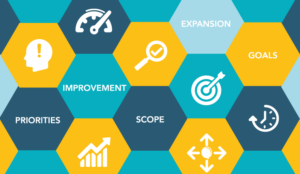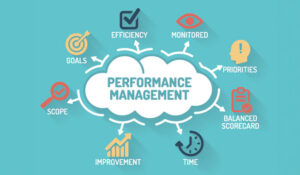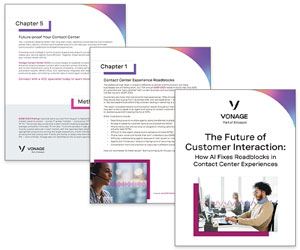Many contact centres take a very reactive approach to customer service and there is an acceptance that that’s just how things are.
When the same call comes in time and time again, contact centres often don’t get down into the root cause of the call, to identify what’s wrong and set about changing that. This is particularly the case when the problem resides outside the contact centre.
Here we take a look at how you can move away from this reactive approach and establish a culture of continuous improvement.
Why It’s Easy to Fall Into a Reactive Approach to Customer Service
One of the biggest difficulties that contact centres face is being made responsible for a promise that somebody else has made.
Maybe it was the promise of the marketing department, or maybe your product promises to solve everyone’s problems – the contact centre will be made responsible for meeting these promises.
Yet, as Justin Robbins, a contact centre and customer service expert, says: “The biggest driver for us having the same issues pop up and having the same conversations again and again is because we’re not keeping our promises. So, we really want to create a culture of continuous improvement.”
The biggest driver for us having the same issues pop up and having the same conversations again and again is because we’re not keeping our promises.
Justin Robbins
With it being the obligation of the contact centre to keep every single promise the organisation makes, you need to ask yourself: how do we do that?
It’s difficult to gain visibility as to what is causing these promises to fail. So, many contact centre leaders instead become really good at fixing the symptoms of a problem and putting out the fires that break out every single day. This means that day after day, you – as a contact centre manager/leader – are doing the same things over and over again.
By falling into this routine, it becomes difficult to make any sustainable changes to improve contact centre performance. It is also why Justin believes that the following definition of insanity sounds a lot like managing a contact centre:
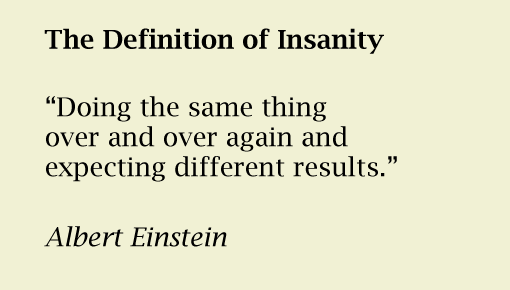
Be Aware of the Disconnect
In order to focus on meeting the promises that your organisation is giving to customers, you need to be aware of the disconnect between the contact centre and other parts of the business.
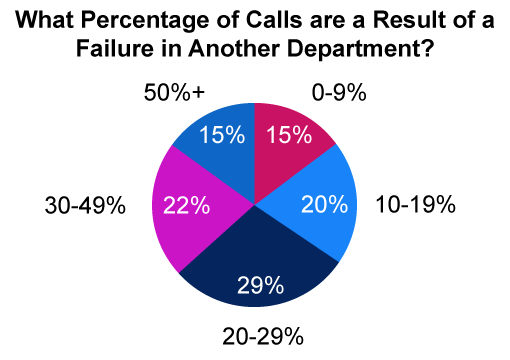
In 15% of contact centres, failures in other departments cause more than half of inbound call volumes (Source – Our webinar: Building A Culture Of Continuous Improvement)
Someone needs to take ownership of this disconnect and to understand what promises the business is making and to understand what excellence looks like within the context of the business. This understanding will provide you with an idea of what you need to do to meet and exceed the expectations of customers, so promises aren’t repeatedly broken.
For example, customers of Waitrose will be expecting a higher standard of service than customers of Lidl. While it may be an unspoken promise, customers of high-end brands will expect a better service, as it should be aligned with their brand values.
Yet the person who is in charge of this disconnect shouldn’t focus only on disconnects with the greater business, but on disconnects within the contact centre itself.
As Justin Robbins says: “Maybe it’s a disconnect between quality and coaching or between workforce management (WFM) and the budget and needs of the contact centre. We’ve got to be very aware of all these possible disconnects.”
By focusing on these disconnects, we can find out who is responsible for us not keeping our promises and who is responsible for us being stuck in this repetitive cycle of doing the same things over and over again.
Often, it’s contact centre leaders themselves – albeit not intentionally.
Justin explains: “So many of us started as an advisor or came in as a team leader or a supervisor and have grown in this environment, meaning you’ve probably been doing what you’ve been doing for quite some time. We just do what we’ve always done.”
We know the familiar, and what we don’t see is beyond. We don’t see the potential of what can we do to really put our contact centre in a more strategic position.
Justin Robbins
“We know the familiar, and what we don’t see is beyond. We don’t see the potential of what can we do to really put our contact centre in a more strategic position, where we can prevent the root causes of these things that are on repeat time and time and time again.”
So, how can we move away from this position and move towards building a culture of continuous improvement?
Shift Your Perspectives
It all begins with our mindset. For many of us, and for many in the contact centre team, a job is an obligation.
According to Justin Robbins, many people think along the lines of: “I have to be at my desk at a certain time. I have to get through all these calls tonight, and I need to achieve these certain metric scores.” Everything becomes about obligations.
Yet customers’ expectations are continuously evolving and they are increasingly in control of the conversation. With this change, the job of contact centre leaders has changed, from having obligations of meeting a standard set of metrics to creating opportunities to help the greater organisation be nimbler and more effective.
To get into this idea of really being about continuous improvement, we’ve got to get beyond the day-to-day fire-fighting.
Justin Robbins
Building on this idea, Justin says: “To get into this idea of really being about continuous improvement, we’ve got to get beyond the day-to-day fire-fighting. We need to be asking ourselves how do we as the contact centre position ourselves as a strategic asset.”
Reposition the Contact Centre as a Strategic Asset
Below are three suggestions for how to reposition your contact centre, some of which you may already be doing in isolation. But when you do all three of these things together, you will likely move into a cycle of continuous improvement naturally, as long as they are built into everything that you do.
1. Cost Efficiency
Going back to the first ever contact centres, they were created to fulfil the mission of handling contacts in the most cost-effective manner. To do more with less.
Organisations pooled together all of their resources, because it’s most cost effective to serve customers that way.

Justin Robbins
As Justin Robbins says: “We have to be looking at ourselves as a contact centre and ask: are we being efficient with our resources?”
“It’s built into who we are and it’s something that we have to be delivering on, if we want to be providing value to the organisation.”
2. Customer Satisfaction and Loyalty
Focusing on satisfaction and loyalty helps you to provide a distinguished service that improves retention and turns customers into advocates.
So, you should ideally be thinking about things like:
- Are you surveying your customers?
- Are you running Voice of the Customer (VoC) programmes?
- Are you measuring retention rates?
- Are you finding out why customers are choosing to leave?
Justin adds: “To build around the idea of continuous improvement, we need to have proactive methods for measuring satisfaction, customer value and loyalty.”
“If customers are not loyal, we need to be finding out what’s causing them to leave. Where is the dissatisfaction coming from? We need to have systems in place to figure that out.”
Let’s Stop There for a Moment
Hopefully, you will be thinking that you already pay close attention to cost efficiency and focus on satisfaction and loyalty. But these are things that are within the contact centre’s control. These are things that we manage on a day-day basis.
Yet those promises that we have to keep, which are being made by other people from other departments in the organisation, should also have an influence on how you operate.
So this is where the third “level” comes and – according to Justin – this is arguably the biggest area in which we need to grow as contact centres. It is in our strategic value.
3. Strategic Value
Think about what goes on in the contact centre and the value you have within the organisation.
For starters, your advisors are the closest touchpoint to your customers. They know what your customers like and don’t like, they know what they’re complaining about and they know what customers are asking for more of.
There is also a wealth of data available at your fingertips. This gives you insight into customer preferences, behaviours and trends. But this information is too often kept within the confines of the contact centre walls.
Justin says that the bottom line is that “not enough of us contact centres are strategically positioning ourselves to marketing to product and development.”
We need to say, this is all of the insight that we have and these are the problems that we’re experiencing. Now, how can we work together to solve this issue?
Justin Robbins
“We need to say, this is all of the insight that we have and these are the problems that we’re experiencing. Now, how can we work together to solve this issue?”
“Remember, just as you in the contact centre want to provide a great experience, so do your peers throughout the rest of the organisation.”
By helping to improve the customer experience across all departments, you are helping to set new customer expectations and prevent the same avoidable contacts from entering the contact centre. As they say, “the best service is no service”.
Summary
To move away from a reactive approach to customer service, you need to think firstly about changing your mindset. To think about your role as an opportunity and not an obligation.
Then, you need to think beyond your focus of ensuring cost efficiency and satisfaction within the contact centre and think about how you can help other departments.
By doing so, you can align yourself with the promises that your organisation makes and improve the customer journey, while the rest of the business will place more value on your contact centre. This could lead to greater funding, so you can fully fulfil the potential of the contact centre.
So, let’s just imagine what it would be like to add strategic value every day. We wouldn’t have to deal with the same problems day in, day out, and we could focus on innovating and elevating the customer experience, as well as coaching and developing our people.
According to Justin, “Organisations that can do this are the ones that we read about in books, that we hear about on the television, and we aspire to be like them.”
So, go away and think about what it would take for you to develop a strategic approach, a plan for continuous improvement, and focus everything you do on delivering value.
For more articles that include Justin’s insights, try reading:
- 12 Ideas to Improve Customer Self-Service Take-Up
- Call Centre Quality Parameters: Creating the Ideal Scorecard and Metric
- 30 Tips to Improve Your Call Quality Monitoring
Author: Robyn Coppell
Published On: 1st Oct 2018 - Last modified: 18th Aug 2025
Read more about - Call Centre Management, Customer Service, Management Strategies, Performance Management, Team Management





